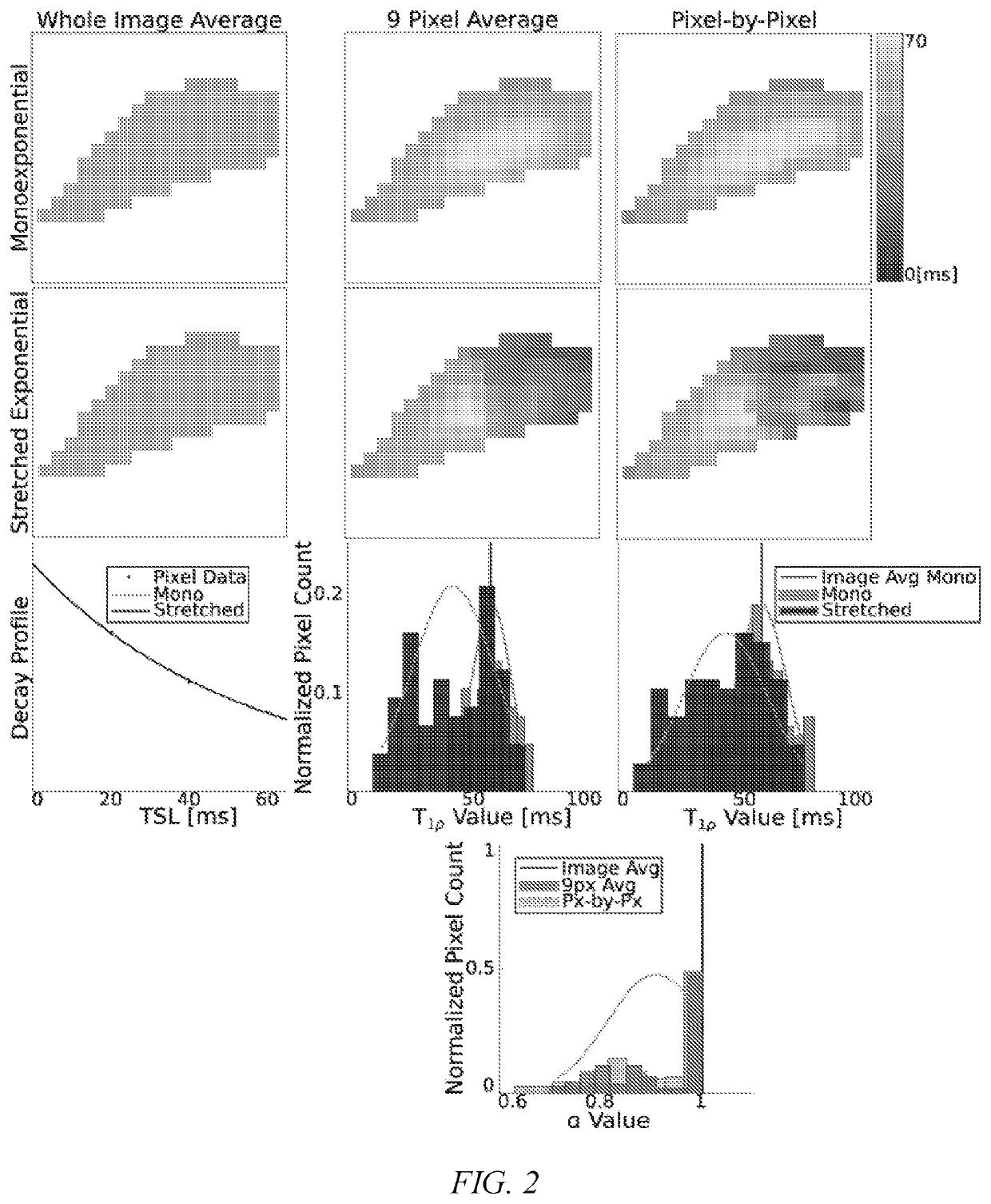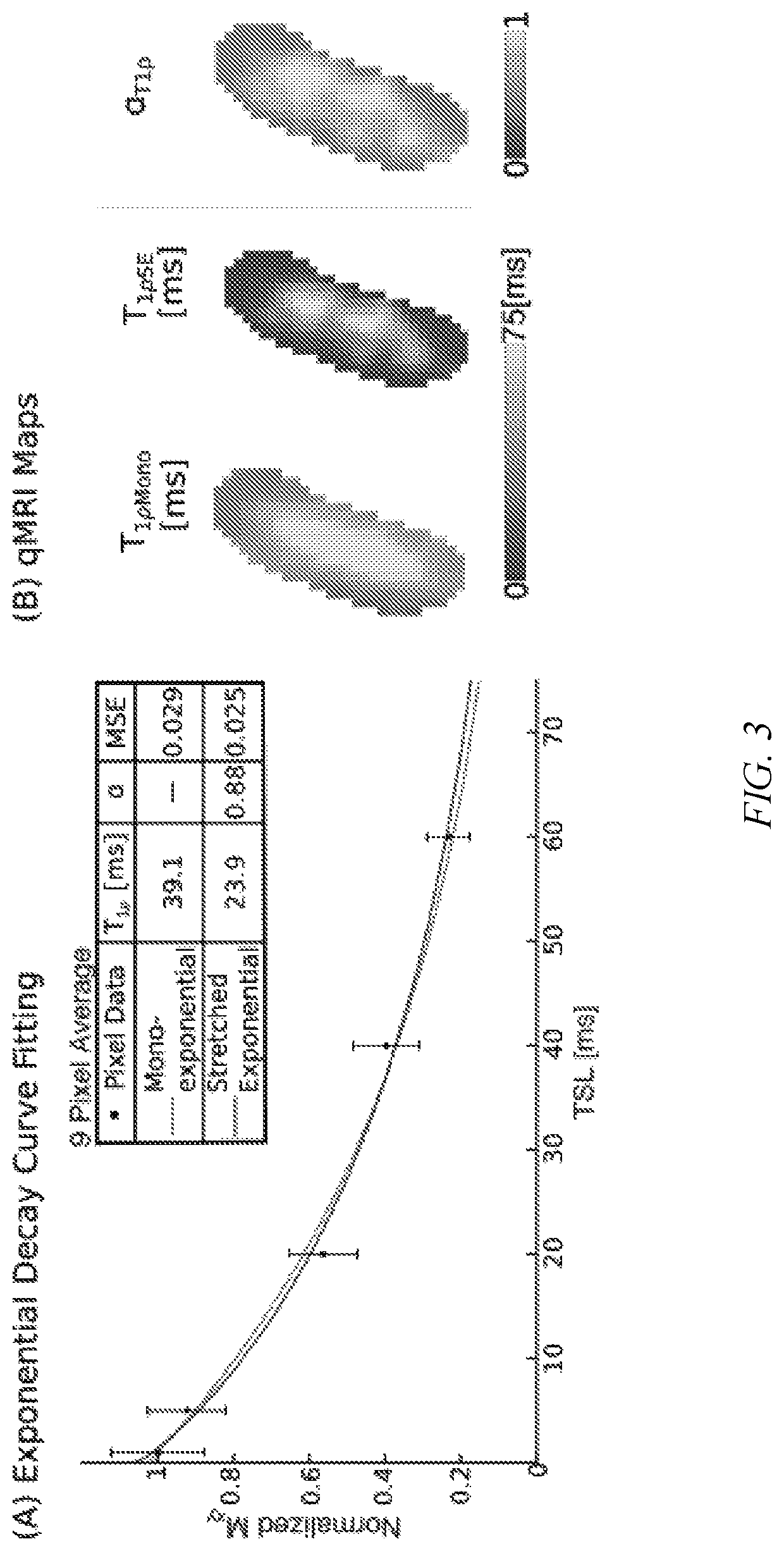Soft tissue matrix characterization using stretched exponential relaxation modeling
a stretching and relaxation modeling technology, applied in the field of magnetic resonance imaging, can solve problems such as neck and back pain, and achieve the effects of reducing error, reducing neck and back pain, and reducing sensitivity to specific matrix components
- Summary
- Abstract
- Description
- Claims
- Application Information
AI Technical Summary
Benefits of technology
Problems solved by technology
Method used
Image
Examples
example 1
Materials and Methods
Raw Data Acquisition and Processing
[0029]Cervical IVDs (C2C3-C6C7) were imaged in 15 healthy subjects (7 / 8 males / females; average age=24.7) using a 3T GE MRI scanner. A magnetization-prepared angle-modulated partitioned k-space spoiled gradient echo snapshots (MAPSS) T1ρ sequence was acquired with the following parameters: spin lock power: 500 Hz spin lock times: [1, 5, 20, 40, 60] ms [Li X, Wyatt C, Rivoire J, et al. Simultaneous acquisition of T1ρ and T2 quantification in knee cartilage: Repeatability and diurnal variation. J. Magn. Reson. Imaging 2014; 39:1287-1293 doi: 10.1002 / jmri.24253]. A T2 sequence was also acquired (echo times: [6.78, 13.97, 21.15, 42.72] ms). Shared imaging sequence parameters were: FOV: 14 cm, matrix: 256×128, slice thickness: 4 mm, views per segment: 64, TR 1.2 s, number of slices: 26, ARC acceleration factor: 2, number of signal averages: 4.
[0030]The first spin lock time (TSL) for the T1ρ relaxation data was excluded from relaxatio...
example 2
Results
[0034]Single subject analysis shows level-wise increase in SE T2 and T1ρ model parameters moving caudally with IVD segment based on the δ values from the disc-wise distributions, but monoexponential models found no qualitative differences (FIG. 4). MSEs derived from model fits were lower in the stretched exponential model than the conventional model for both T1ρ and T2 (p1ρSE and T2SE) δ values qualitatively increase caudally, a stronger relationship exists in the δ values of the α terms (αT1ρ, αT2). These qualitative observations follow similar trends in both relaxation measures. However, they are more prominent in the T1ρ parameters than T2. The SE (T1ρSE, αT1ρ, T2SE, and αT2) δ values increase at the lower discs (C5C6-C6C7), particularly in the NP compared to the AF (FIGS. 5A and 5B).
[0035]The population level (i) (n=15) T1ρ stable distribution analysis demonstrates a significant relationship between IVD level and SE model parameters (FIG. 6A). Caudally, the shape paramete...
PUM
 Login to View More
Login to View More Abstract
Description
Claims
Application Information
 Login to View More
Login to View More - R&D
- Intellectual Property
- Life Sciences
- Materials
- Tech Scout
- Unparalleled Data Quality
- Higher Quality Content
- 60% Fewer Hallucinations
Browse by: Latest US Patents, China's latest patents, Technical Efficacy Thesaurus, Application Domain, Technology Topic, Popular Technical Reports.
© 2025 PatSnap. All rights reserved.Legal|Privacy policy|Modern Slavery Act Transparency Statement|Sitemap|About US| Contact US: help@patsnap.com



